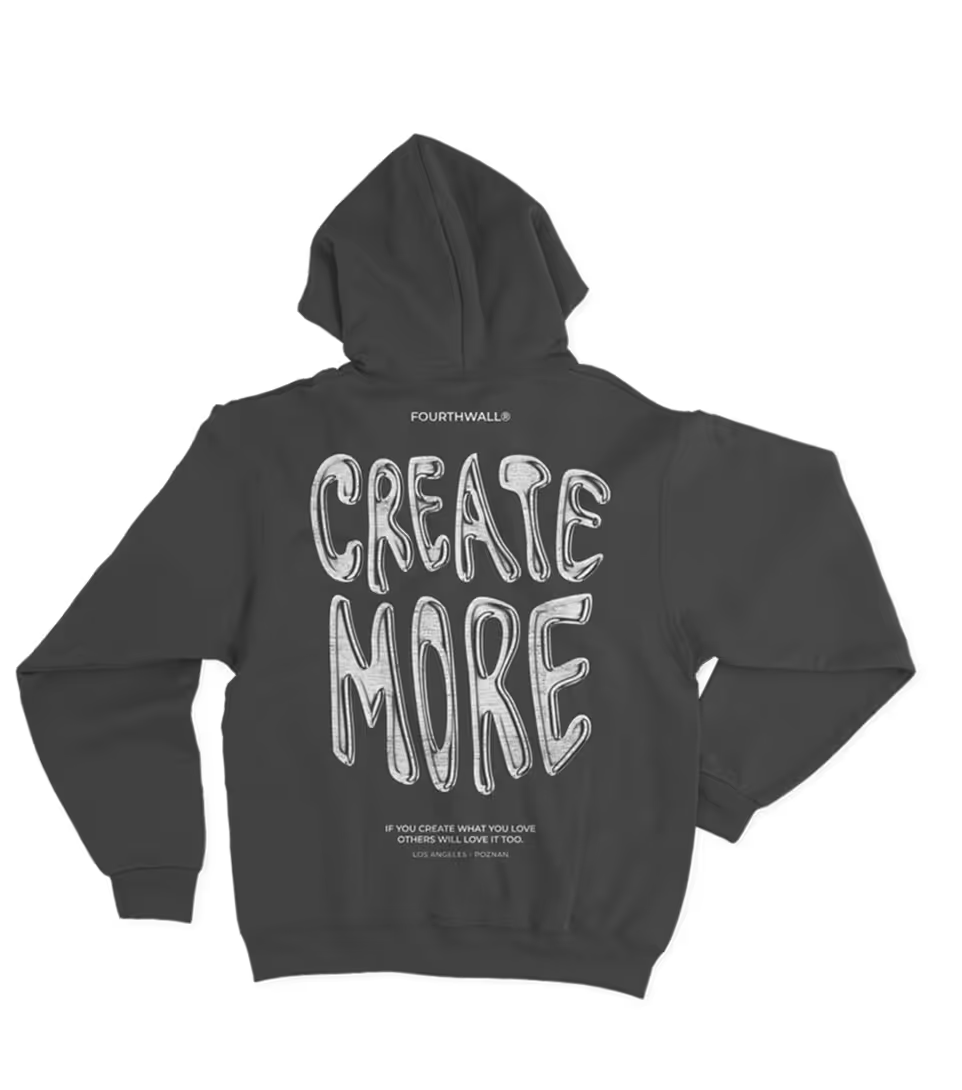Merchandise Planning: Best Practices and Steps for Creators

As a content creator, merchandise planning is a crucial component of your business strategy to sell your products and engage with your audience effectively.
Merchandise planning can help you efficiently manage your inventory, maximize your sales, and make strategic decisions to achieve your business objectives.
In this article, we will cover what merchandise planning is and how you can develop a merchandise plan to increase your sales and grow your business.
What Is Merchandise Planning?
Merchandise planning is a strategic process that brands engage in to manage their inventory, sales, and product assortment effectively. This process involves analyzing sales data, making informed decisions about which products to stock, and setting prices that support the brand's business objectives. Merchandise planning can help content creators optimize their product offerings to target specific segments of their audience and maximize sales.
For example, merchandise planning can help a content creator to effectively manage their inventory by identifying which products are selling well and which products are not. With this information, a content creator can adjust their product assortment to include more of the products that sell well and reduce or eliminate products that do not sell. This helps to minimize excess inventory, reduce costs, and improve profitability.
Why Is Merchandise Planning Important?
Merchandise planning is essential for achieving your business objectives as a content creator. Here are three reasons why merchandise planning is important:
Optimized Inventory Management
Merchandise planning helps content creators to manage their inventory levels more effectively. With a merchandise plan in place, content creators can optimize their inventory by forecasting demand, tracking sales data, and identifying which products are selling well. By optimizing their inventory levels, content creators can reduce their costs, reduce waste, and improve profitability.
Maximized Sales
A merchandise plan can help you maximize your sales by ensuring you have the right products, at the right price, and available to your audience at the right time. By analyzing sales data and forecasting demand, you can strategically plan your product offering to meet the needs and wants of your audience. This can help to increase your sales, improve customer satisfaction, and foster brand loyalty.
Strategic Decision-Making
Merchandise planning involves making data-driven decisions about your product assortment, pricing strategies, and inventory levels. This strategic decision-making process ensures that you are targeting the right audience with the right products and pricing strategies, which can result in increased sales and improved profitability.
The 5 Components Of Merchandise Planning

Merchandise planning involves five key components that are essential to a content creator's success. Here are four key components that every content creator should consider:
1. Product
Product planning is a multifaceted process that involves careful selection, curation, and presentation of products to meet the diverse needs and preferences of online shoppers while staying true to the retailer's brand identity and strategic objectives.
Firstly, it involves conducting market research and leveraging data analytics to identify emerging trends, consumer preferences, and gaps in the market. E-commerce platforms often utilize tools such as keyword research, trend analysis, and competitor benchmarking to gain insights into which products are in demand and which have the potential for success.
Once potential products are identified, e-commerce retailers may engage in product sourcing, which involves finding suppliers or manufacturers that offer high-quality products at competitive prices. This could entail establishing relationships with wholesalers, dropshippers, or even creating private label products to differentiate from competitors.
Evaluating product features, quality, and uniqueness is essential in ensuring that the selected products align with the retailer's brand image and positioning. Factors such as product specifications, materials, and design are carefully assessed to ensure they meet the expectations of the target audience.
2. Range
The range of products you offer is crucial for your merchandise planning. By organizing products into logical categories based on factors such as product type, style, size, color, and price range, you create a well-structured assortment that caters to diverse customer segments and occasions.
This assortment ensures that customers can quickly find relevant products, reducing friction in the purchasing journey and increasing sales likelihood.
Effective range planning allows e-commerce retailers to highlight key product categories, curate personalized recommendations, and implement cross-selling or upselling strategies to maximize sales opportunities.
Regular analysis of customer behavior, search patterns, and purchase history enables refinement of range planning efforts to align with evolving consumer trends and preferences, driving engagement, loyalty, and revenue growth..
3. Price
Your pricing strategy plays a crucial role in shaping consumer perceptions, driving sales, and ultimately determining the success of the business. It's essential for e-commerce stores to align their pricing strategy with their overall business objectives and brand value proposition.
This involves considering factors such as product positioning, target market, and competitive landscape to determine the optimal pricing levels. E-commerce retailers can leverage various tools and techniques, including competitor price analysis, customer segmentation, and sales data analytics, to inform their pricing decisions.
By monitoring market trends, assessing customer preferences, and evaluating the performance of different pricing strategies, e-commerce stores can refine their pricing approach to maximize profitability while remaining competitive in the online marketplace.
4. Assortment
This focuses on determining the right mix and quantity of products to carry within each category or range, with factors that consider seasonality, trends, and customer demand.
Assortment planning involves leveraging advanced analytics tools to analyze sales data, customer preferences, and market trends to forecast demand accurately.
E-commerce retailers can then strategically balance their assortment by incorporating core products that have consistent demand, seasonal items that capitalize on trends or occasions, and fashion-forward pieces that cater to evolving tastes.
By maintaining a well-rounded assortment, e-commerce stores can cater to a diverse customer base, capture a broader market share, and drive repeat purchases.
Additionally, dynamic assortment planning allows e-commerce retailers to adapt quickly to changes in consumer behavior or market dynamics, ensuring they remain agile and responsive in an ever-evolving digital landscape.
5. Space
Effective space planning ensures that physical or virtual store layouts are optimized to showcase products, facilitate easy navigation, and encourage customer engagement.
Whether in brick-and-mortar stores or e-commerce platforms, strategic space allocation allows retailers to maximize sales potential by highlighting key products, promoting seasonal offerings, and creating visually appealing displays.
Moreover, space planning enables retailers to adapt to changing market dynamics, seasonal trends, and promotional activities, ensuring that the allocation of space remains flexible and responsive to evolving consumer preferences.
By leveraging space effectively, retailers can create immersive shopping environments that drive traffic, enhance brand perception, and ultimately contribute to increased sales and customer loyalty.
Practices For Successful Merchandise Planning

To increase the success of your merchandise planning strategy, here are four best practices for content creators:
Forecast sales
Forecasting sales is a cornerstone of effective merchandise planning, providing invaluable insights to optimize inventory management, promotional activities, and production cycles.
By harnessing past sales data and considering market trends, e-commerce retailers can accurately predict future demand, enabling them to adjust inventory levels proactively to meet customer needs while minimizing stockouts or excess inventory.
Additionally, sales forecasting empowers retailers to strategically plan promotions and marketing campaigns, aligning promotional activities with anticipated demand peaks to maximize impact and drive sales.
Furthermore, by leveraging advanced forecasting models and analytics tools, e-commerce retailers can identify patterns, seasonality, and fluctuations in demand, enabling them to make informed decisions to optimize their supply chain and inventory allocation.
Ultimately, sales forecasting serves as a critical tool for e-commerce retailers to anticipate market dynamics, mitigate risks, and capitalize on opportunities for sustainable growth and profitability.
Make data-driven decisions
Analyzing sales data allows retailers to identify top-performing products, understand which items drive the most revenue, and pinpoint areas for improvement.
Additionally, customer feedback provides invaluable insights into satisfaction levels, pain points, and areas for enhancement, enabling retailers to tailor their offerings and improve the overall shopping experience.
Moreover, monitoring market trends allows e-commerce businesses to stay ahead of the curve, anticipate shifts in consumer demand, and adapt their strategies accordingly.
Whether it's adjusting pricing strategies, optimizing product ranges, or designing targeted promotions, leveraging data-driven insights enables e-commerce retailers to make informed decisions that drive sales and foster long-term customer loyalty.
Prioritize inventory
Prioritizing inventory management is fundamental to effective merchandise planning, especially in the dynamic landscape of e-commerce. It involves striking a delicate balance between minimizing the risks of overstock and out-of-stock situations to optimize costs and cash flow.
This involves leveraging historical sales data, market trends, and demand forecasts to determine optimal inventory levels for each product, ensuring that stock is available to meet customer demand while minimizing excess inventory.
Overstocked inventory ties up valuable capital and storage space, leading to increased holding costs and the risk of obsolescence. Conversely, out-of-stock situations can result in lost sales, diminished customer satisfaction, and damage to brand reputation.
By implementing inventory optimization strategies, such as demand forecasting, replenishment planning, and inventory turnover analysis, e-commerce retailers can make informed decisions when purchasing products to sell.
Embrace agility
Embracing agility is not just a strategy; it's a mindset that underpins successful merchandise planning in the ever-evolving landscape of e-commerce. It involves being responsive and adaptable to changing market conditions, consumer preferences, and emerging trends.
In today's fast-paced environment, where customer expectations are constantly evolving, agility is essential for staying ahead of the curve and maintaining a competitive edge. This means being willing to pivot quickly, whether it's introducing new products, adjusting pricing strategies, or rethinking promotional campaigns.
By embracing agility, e-commerce retailers can proactively anticipate shifts in consumer needs and preferences, enabling them to tailor their product offerings accordingly. This may involve leveraging real-time data analytics, customer feedback, and market insights to identify emerging opportunities and seize them before competitors.
Additionally, cultivating a culture of innovation and experimentation allows retailers to test new ideas, iterate on existing strategies, and continuously optimize their merchandise planning efforts.
How To Develop A Merchandise Plan: 4 Steps

Here are four steps that you can use to develop an effective merchandise plan:
1. Execute a market research
Research the market to gain insights into your target audience's preferences, buying habits, and trends. Analyze your competitors' product offerings, pricing strategies, and promotions to determine how you can differentiate your products, create unique product offerings, and appeal to your target consumers.
2. Develop a buying strategy
Plan your buying strategy by deciding which products you should purchase, the quantity that you should stock, and the price that you should pay for each product. This strategy should be aligned with your business objectives, your marketing plan and should factor in seasonality and consumer preferences.
3. Perform pre-season planning
Perform pre-season planning to analyze the market and determine which products to stock and how much inventory you should carry. This step enables you to forecast the demand for each product, develop pricing strategies, and schedule promotions.
4. Make in-season adjustments
Review your sales data regularly to assess inventory needs, determine which products to reorder, and which products to discontinue. You can also use this data to adjust pricing, promotions, and product offerings to meet the demands of your audience more effectively.
Execute Your Merchandise Planning With Fourthwall!
Fourthwall is an e-commerce platform that simplifies the execution of your merchandise plan.
You can create, design, and sell customized products on a platform built to meet your needs. Fourthwall allows you to use its features to analyze your audience, develop a product mix, price items, manage inventory, and execute a profitable merchandise plan.
With Fourthwall, you will get insights into your audience demographics, track your sales data, and benefit from customizable products that help you create unique offerings that appeal to your target audience.
















